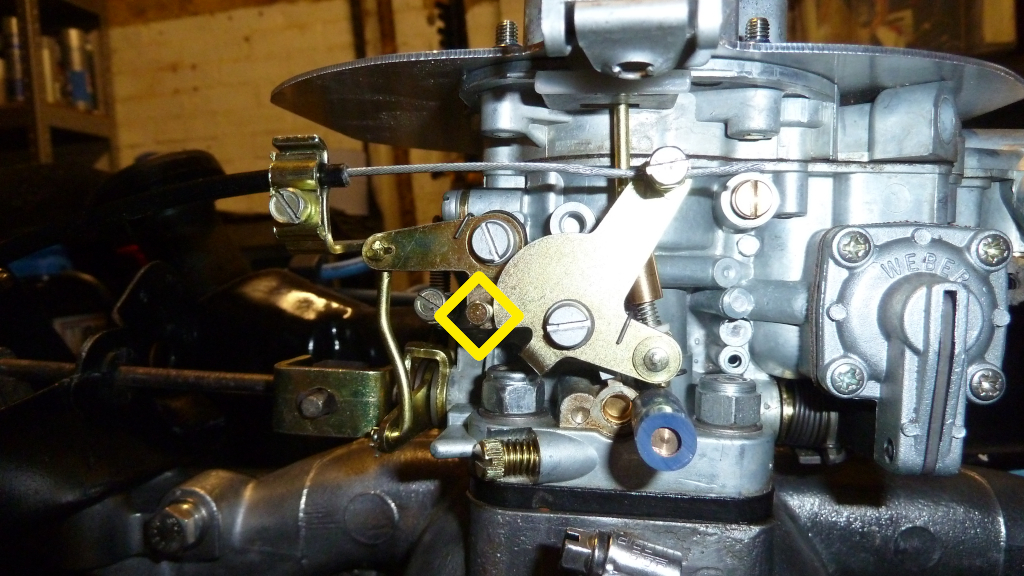
When I fitted the Weber DGV carburettor to my engine everything worked well - apart from cold starting. The engine would start at the first attempt, but would not stay running. The carburettor didn't offer an easy fast idle adjustment, which made life very difficult when trying to drive while keeping the engine running with the accelerator pedal.
After playing with it for a while and failing to fix the problem, I decided to do some research on Google. This carburettor seems to be very popular with people who run old classic cars such as Volkswagons and Volvos, especially in the USA - I eventually found a brief post from a very knowledgeable person on an American forum who suggested a simple solution.
When the choke is applied a lever is pulled and a cam pushes a pin to the side.

When the pin is moved, various cams and levers are supposed to rotate the accelerator linkage to increase the rpm - in my case, the accelerator arm was barely moving, even at full choke. Investigations showed that there was a large amount of slack in the mechanism.
The official way to fix this problem is to bend the wire link next to the cam pin, but the chances of doing that without damaging some other part of the linkage were slim. I also thought that method seemed a bit crude.
The solution suggested by the American genius was to fit a sleeve over the cam pin to take up the slack. This sleeve had the following dimensions:
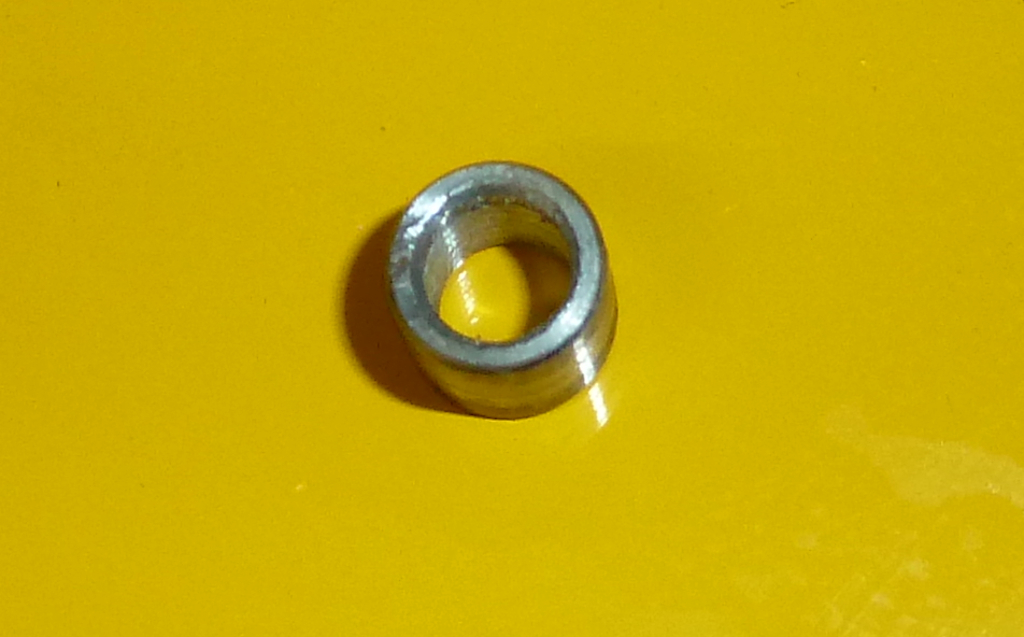
Here the sleeve has been put in place temporarily while testing its effectiveness.
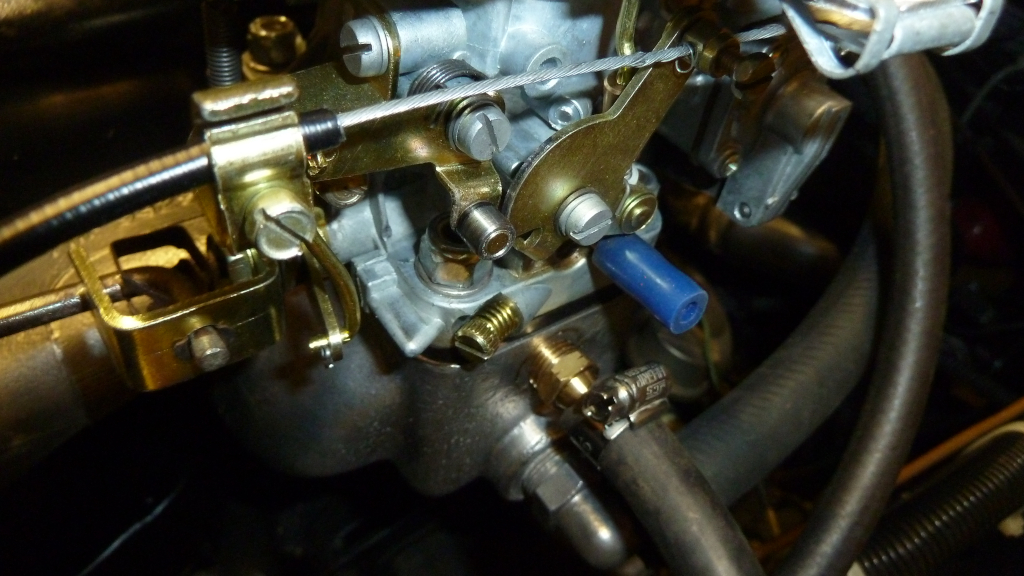
The sleeve could be glued to the peg using Loctite, but I wanted to be able to change the sleeve if it didn't work as expected. To this end I removed the lever and drilled through the peg, then tapped it M3.
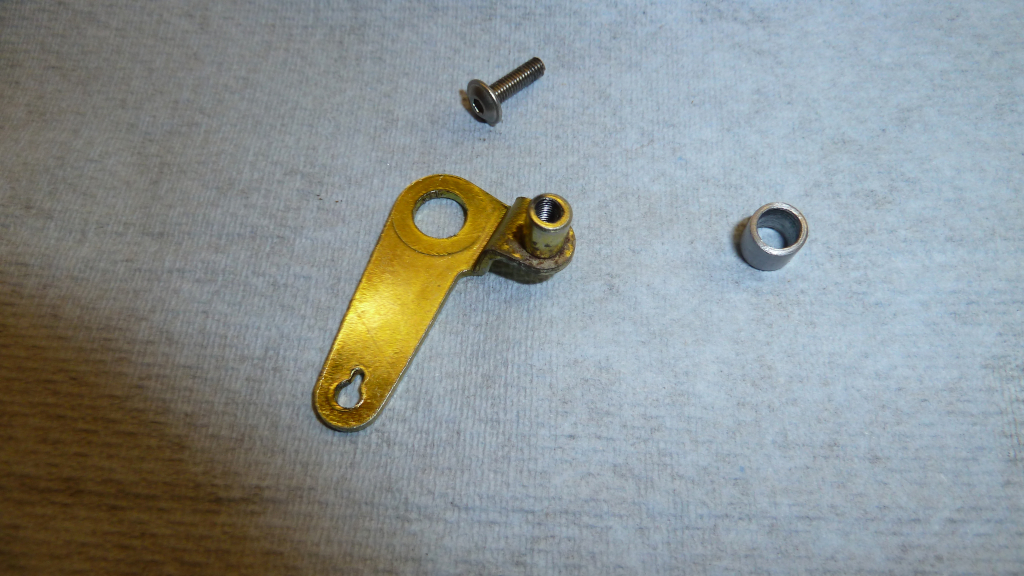
A broad-headed screw was sufficient to hold the sleeve in place.
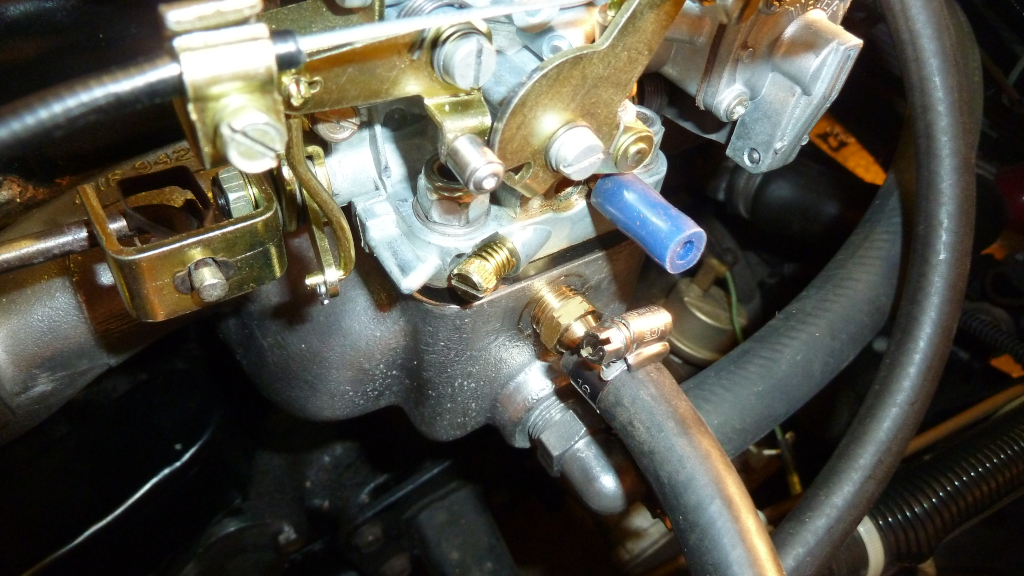
This all seems to work very well, and I'm pleased with the result.
| [Weber DGV 32/36 carburettor menu] |